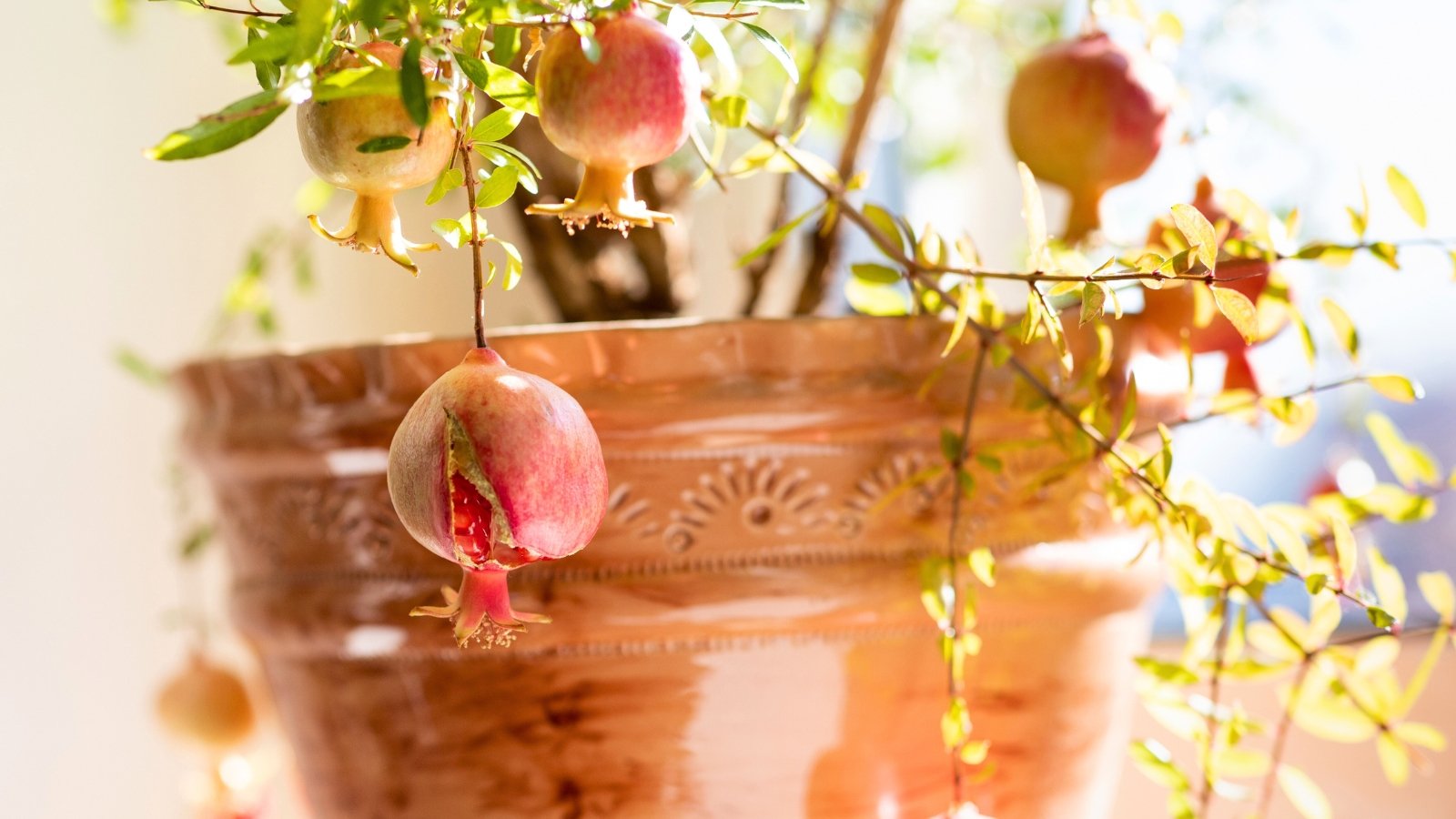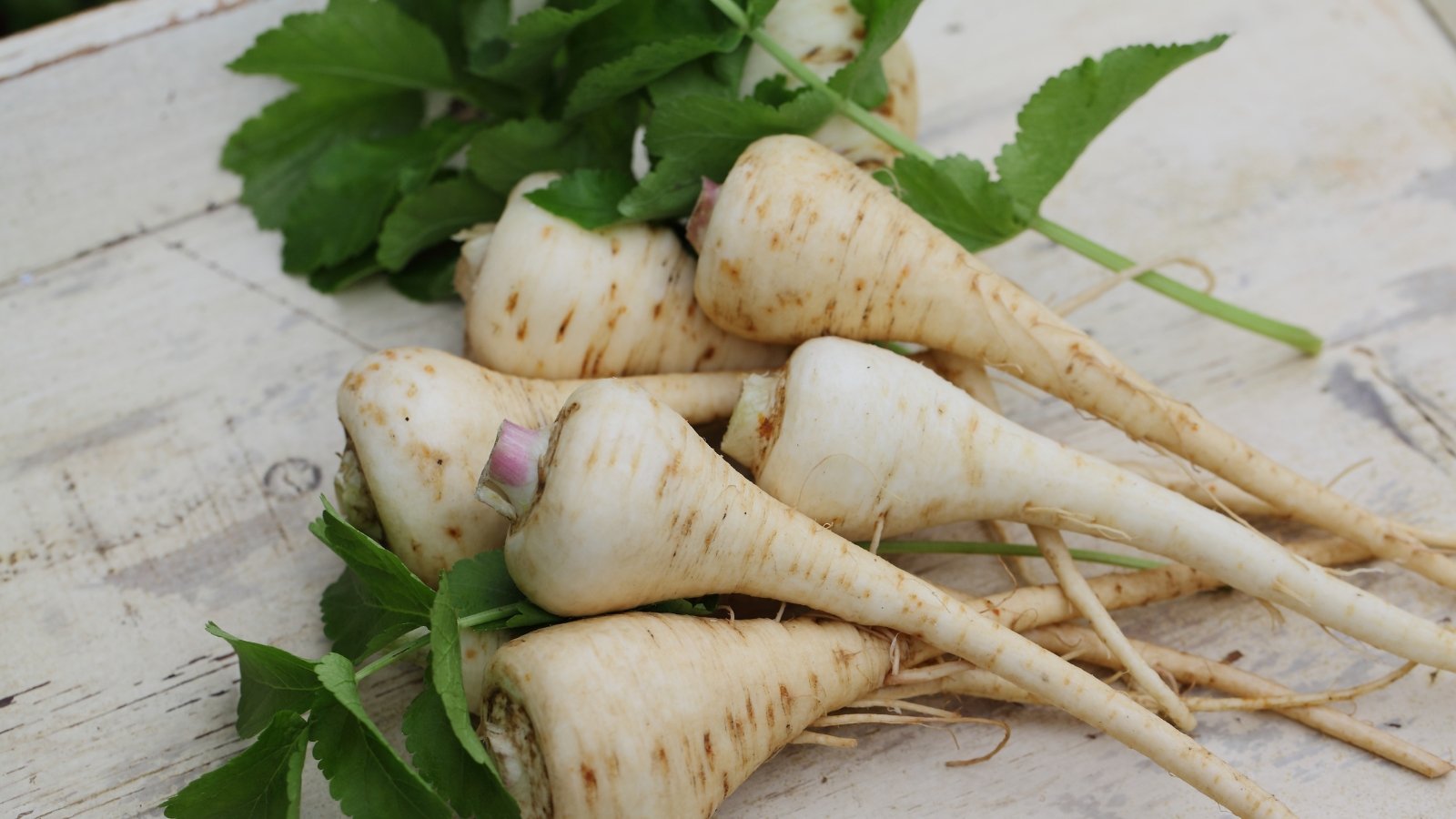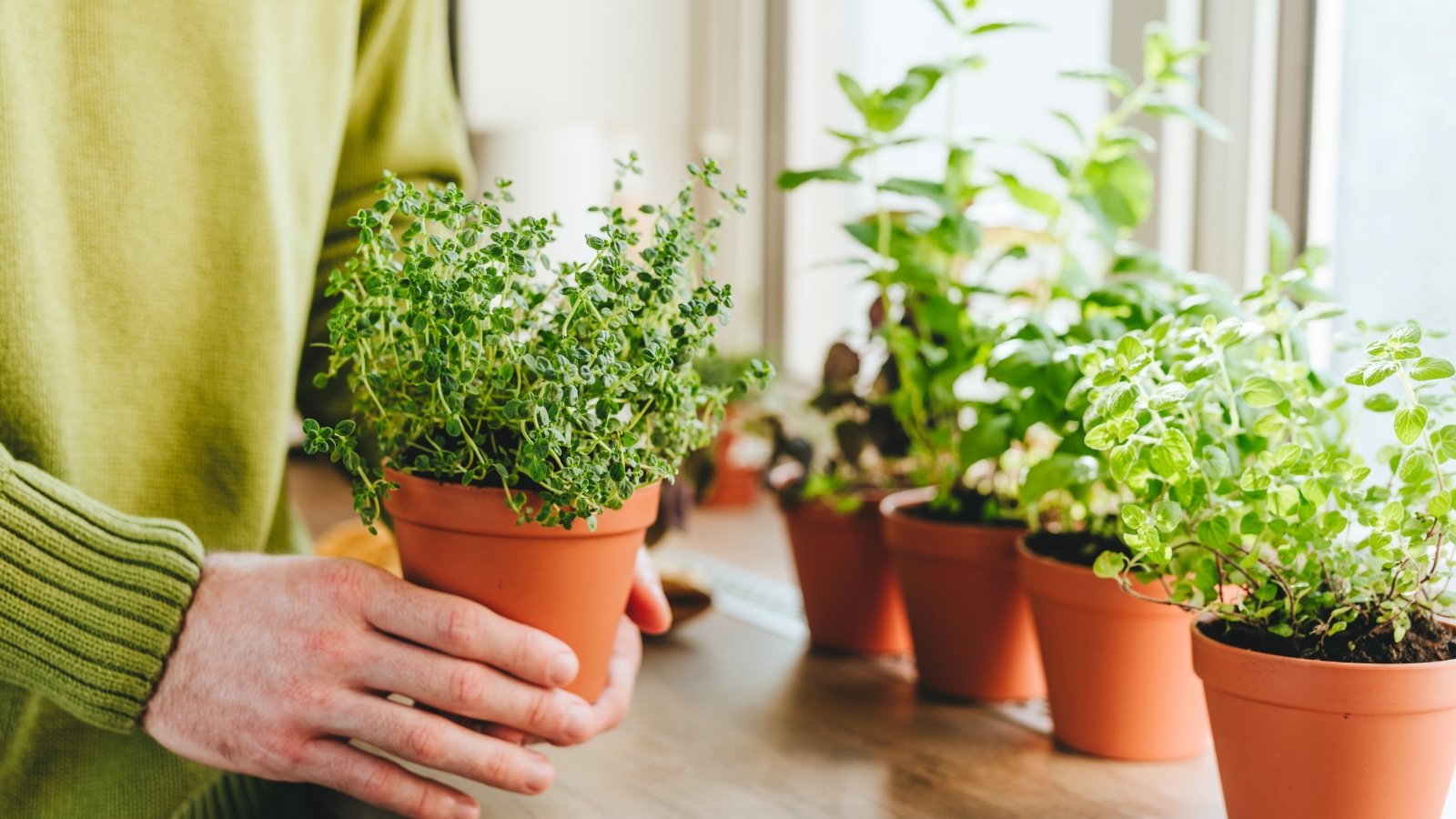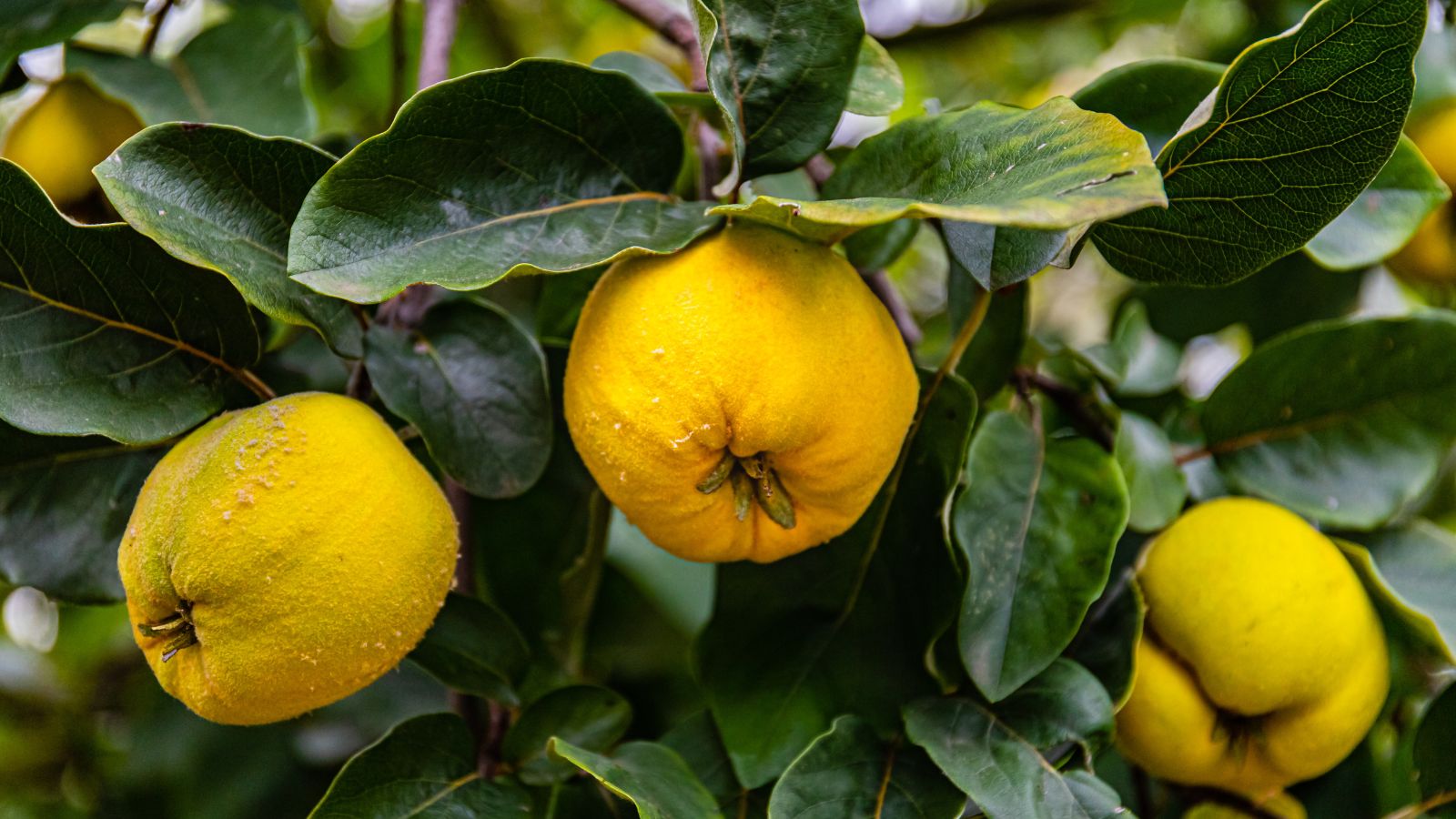
How and When to Harvest Quince
[ad_1]
A member of the Rosaceae family, quince—like its cousins the apple and the rose—bears a sweet fragrance from its flowers and fruit. Generally called Cydonia oblonga in Latin, it’s accessible in a deciduous shrub or tree sort. Its golden-yellow pome, or fruit, is analogous in kind to a cross between an apple and a pear. The pome grows to about 3 inches in diameter. They’re powerhouses of eating regimen, with effectively being benefits that embody antioxidant, anti-inflammatory, and anti-ulcerative properties.
If in case you may have on no account tasted quince (or heard of it), you are not alone. As quickly as a favorite of historic Greeks, Romans, and Middle-Age-era nobles, the quince might have misplaced in type enchantment on account of most varieties type bitter and astringent merely off the tree. It’s moreover not a simple keeper, which gives groceries even a lot much less incentive to carry it of their produce sections. Whereas there are some fresh-eating varieties, these are often not extensively on the market within the USA.
Naturally extreme in pectin, its magic shines as quickly as baked, boiled, or stewed. Sugar is generally added to offset its sourness. Quince makes a pleasing, sunset-colored, sliceable fruit gel, jelly, jam, marmalade, baked dessert, liqueur, or cider. It is often missing from produce aisles on account of it bruises merely. Nonetheless, this makes it an thrilling addition to the home yard, as an distinctive fruit may very well be just a few steps from the kitchen.
Proper right here, we’ll take you through the easy steps of harvesting and storing this lovely fruit in an effort to create nice culinary treats to share with family and associates.
When To Harvest
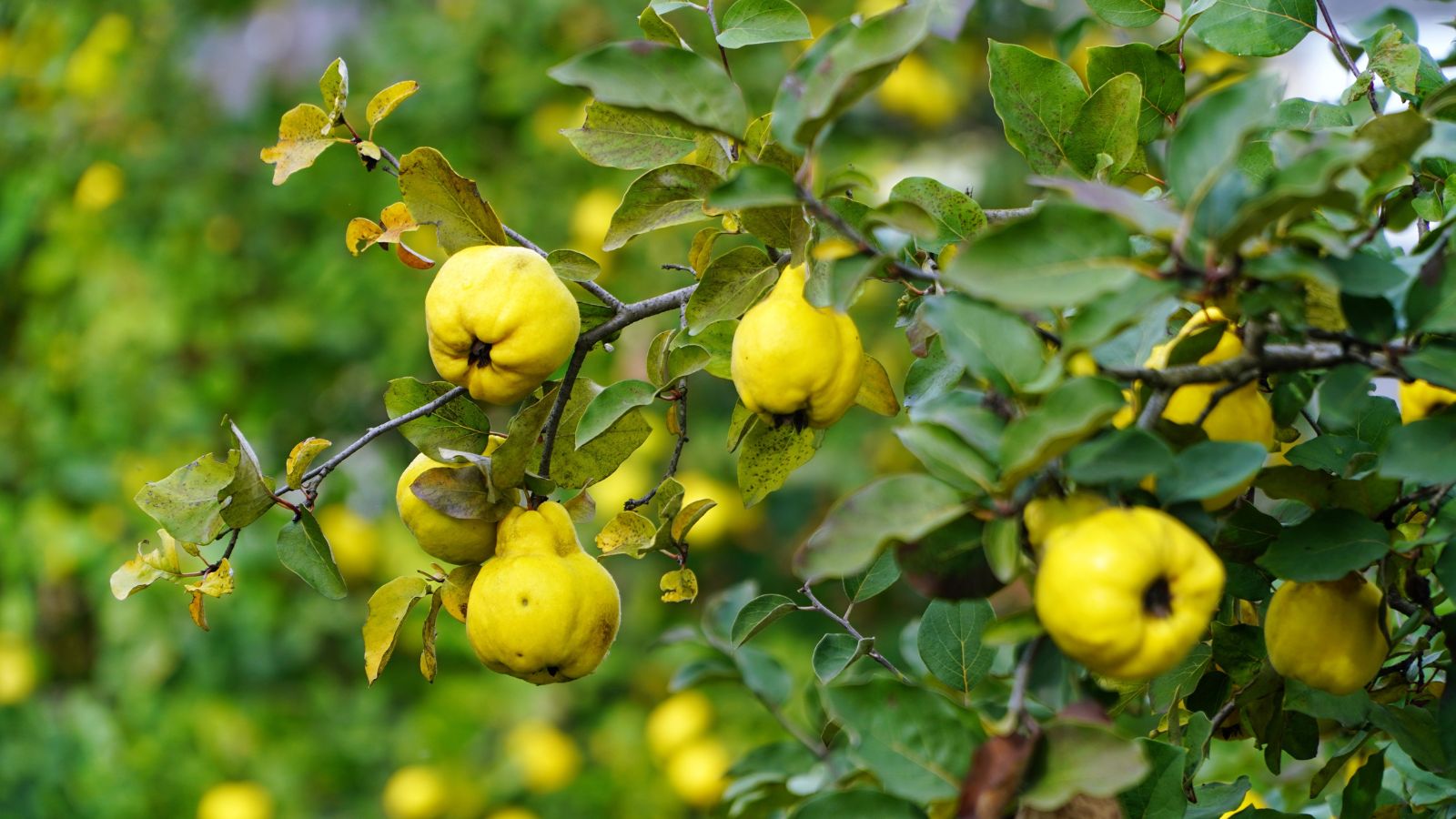

Relying in your hardiness zone, C. oblonga is ready to resolve from late summer time season by mid-fall, when its color shifts from deep inexperienced to a lighter inexperienced. That’s to avoid shedding fruit that drops and blemishes on the underside when ripe.
If picked early, the fruit continues to ripen off the tree at about room temperature (68°F or 20°C). Nonetheless, some specialists advocate harvesting quince when it’s golden yellow, nevertheless nonetheless company. Each strategy, it’s important to reap quince sooner than the first frost to avoid hurt to the fruit tissue and potential rot.
If harvested completely ripe, the pomes closing in storage for 2 or 3 months at 0°C or 32°F in a high-humidity ambiance.
Selecting and Storing
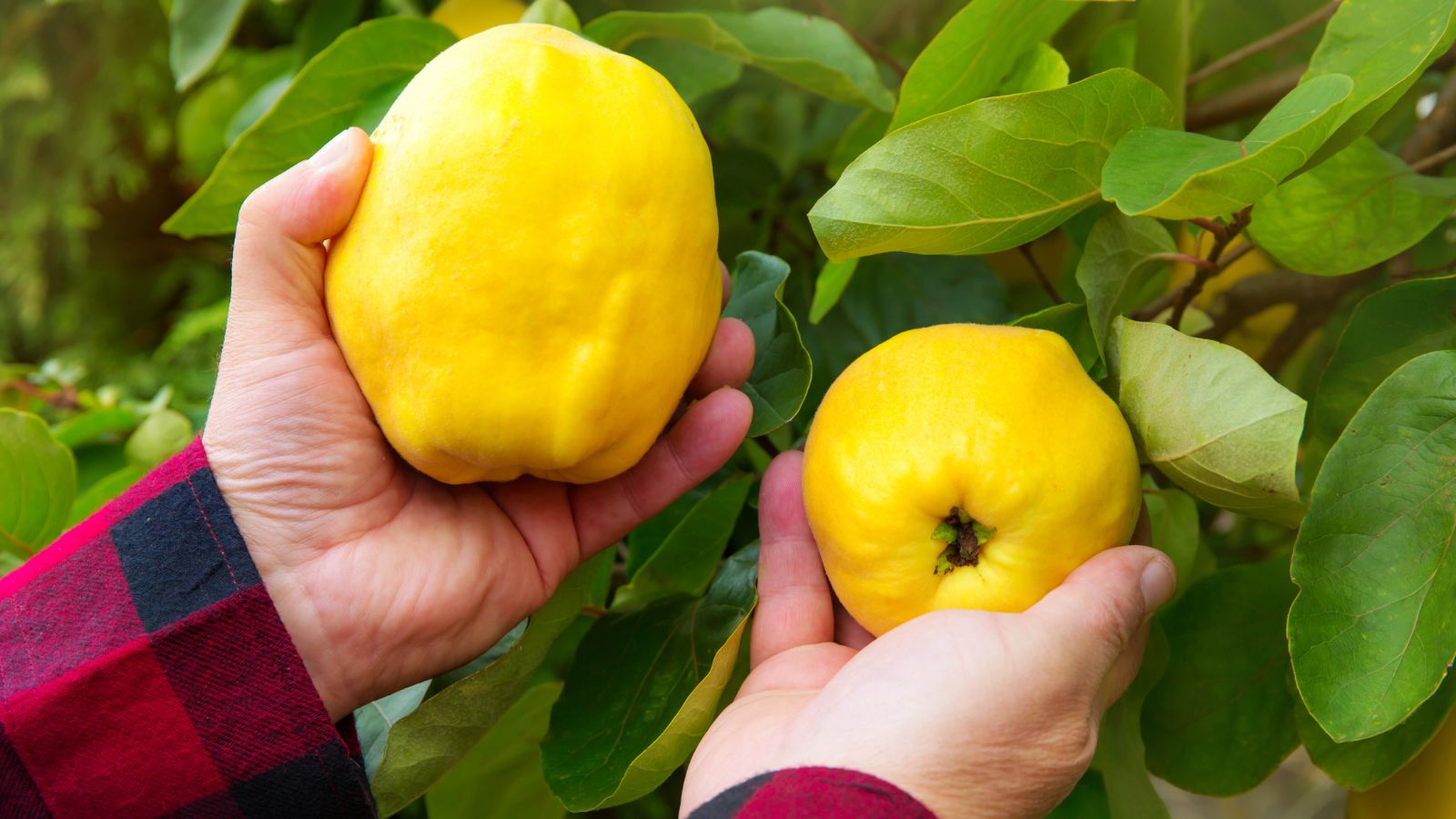

Barely than plucking quince off the tree, use a sharp knife or small pruner to reap the fruit. Decrease by its stem whereas holding it gently alongside together with your totally different hand. It’ll help forestall bruising and discoloration.
The following step is to appropriately retailer the fruit as a result of it ripens, and that’s the place this species will get considerably fussy.
Place pomes a minimum of an inch apart in slatted wood or cardboard trays. They should not contact one another or be wrapped. Set the trays in a cool, darkish place, paying homage to a cellar or basement. Do not place them near totally different fruits — their intense fragrance, lovely as many noses uncover it to be, can infuse itself into its neighbors.
The ripening course of occurs between six and eight weeks after harvest. Over this period, inexperienced pomes will flip a golden yellow.
Preparing for Cooking
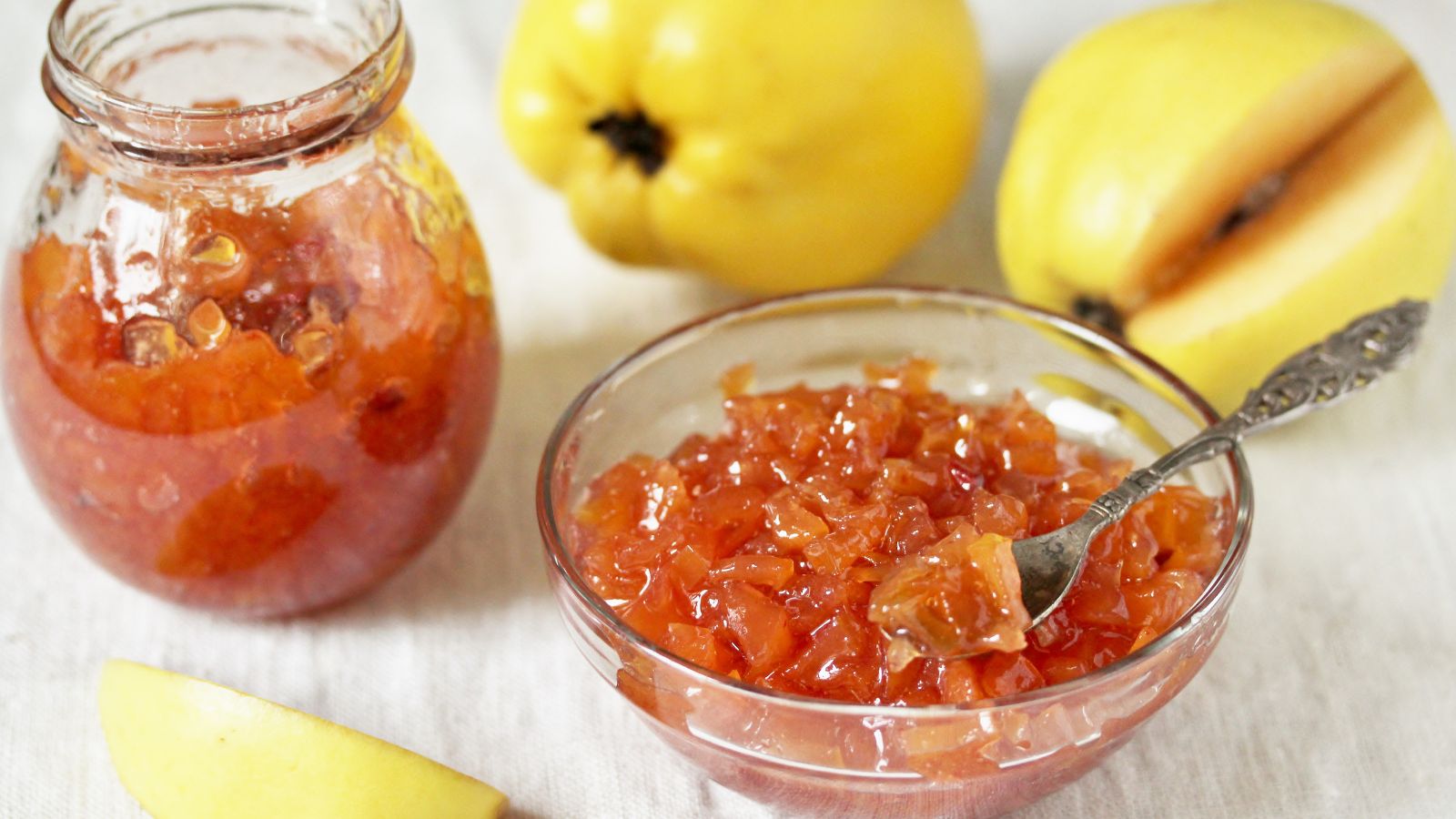

Using a vegetable peeler, take away the yellow pores and pores and skin and put apart. Pectin is packed in these priceless peels, so use them for making membrillo (Spanish quince paste), jelly, jam, or marmalade.
Subsequent, take a small slice off the underside of the pome to make its base common for paring. Decrease downward on each of the 4 sides alongside the core. Identical to the peels, you may even save the cores — seeds and all — for his or her pectin.
Digging Deeper: Effectively Rising and Harvesting Quince
Assure plentiful harvests with these information and ideas.
A Little Historic previous
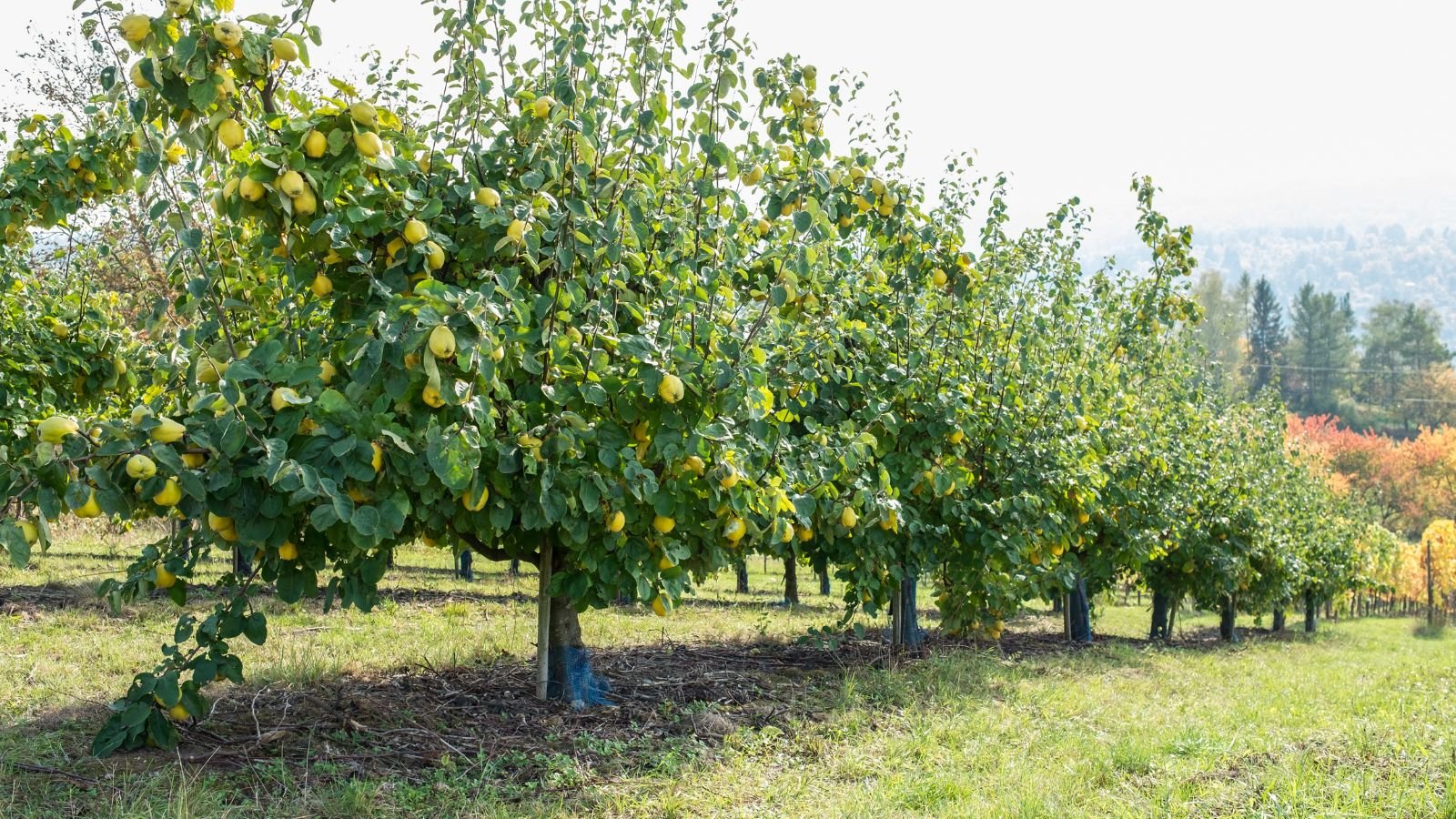

This tree has a rich historic previous, originating in Armenia, Georgia, Azerbaijan, and northern Iran and eventually spreading to Western Europe and America. Spherical 77 CE, Roman naturalist Pliny the Elder described its fruit as being “held in extreme esteem.” He well-known its fairly just a few varieties and the best way that they had been hung in “the antechambers of good males,” presumably to retailer them whereas moreover using their “lovely odor” as an air freshener.
Plenty of of years later, quince was trendy in early American gardens, warranting a degree out in President George Washington’s diary and in President Thomas Jefferson’s notes on crops grown at his well-known Virginia property, Monticello. In an 1896 e-book titled, Quince Custom, author William Witler Meech sang the pome’s praises, detailed its cultivation methods, and cataloged its many-legged enemies over 176 fact-jammed pages. Meech even really helpful that quince had been the biblical “forbidden fruit” that had tempted Eve.
The early 2000s seen solely 250 acres grown inside the U.S. for its fruit, and primarily in California. Perhaps surprisingly, this species is often raised as a rootstock for grafted pear timber. In France, cuttings have been taken for this goal since sooner than 1500.
Improvement Habits
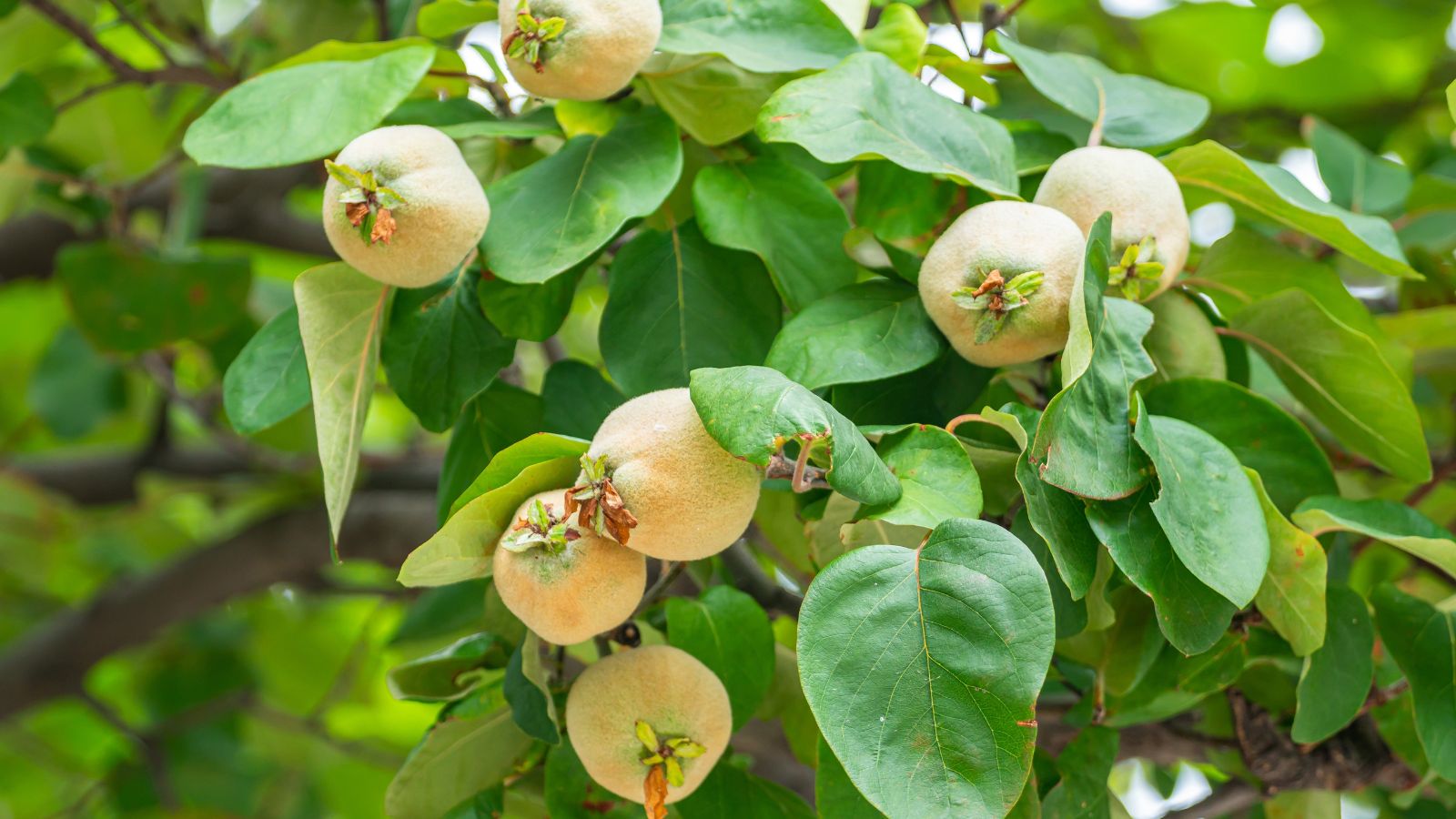

Most quinces are self-fertile, which means they don’t require one different tree to pollinate and produce fruit so to harvest. Moreover they keep for over 50 years. They’re pretty hardy, tolerating a variety of soils and climates. Throughout the continental U.S., quince grows from USDA zones 5-9 and usually as little as zone 4. It’s a fairly compact tree for the home yard, rising to a peak of 15’ with a 15’ cowl.
C. oblonga likes full photo voltaic nevertheless desires shelter from the wind. Whereas quince can take just a bit dampness, it’s happiest in scorching, dry climates and acid soils. In elevated pH (additional alkaline) soils, quince timber do not develop as correctly. An extreme quantity of fertilization is simply not good each, as this may attraction to harmful bacterial progress.
The flowers resemble these of the apple, with white to pale-pink petals which might be equally ornamental and sweet-scented. They bloom in mid-to-late spring. Whereas the pomes are creating, they’re coated in a lightweight fuzz that sheds by the purpose the fruit is completely ripe.
In its early phases, a sapling desires full of life pruning, notably to discourage suckers from rising wildly from the trunk’s base. Taming these will protect your tree from turning into an unwieldy bramble. A single trunk and open crown is the purpose proper right here, as this creates increased airflow and light-weight distribution for fruit progress, and proper pruning deters pests and illnesses. Preserving all of the items tidy over time can also showcase the attention-grabbing gnarled choices this distinguished tree develops as a result of it ages.
Shut Kin
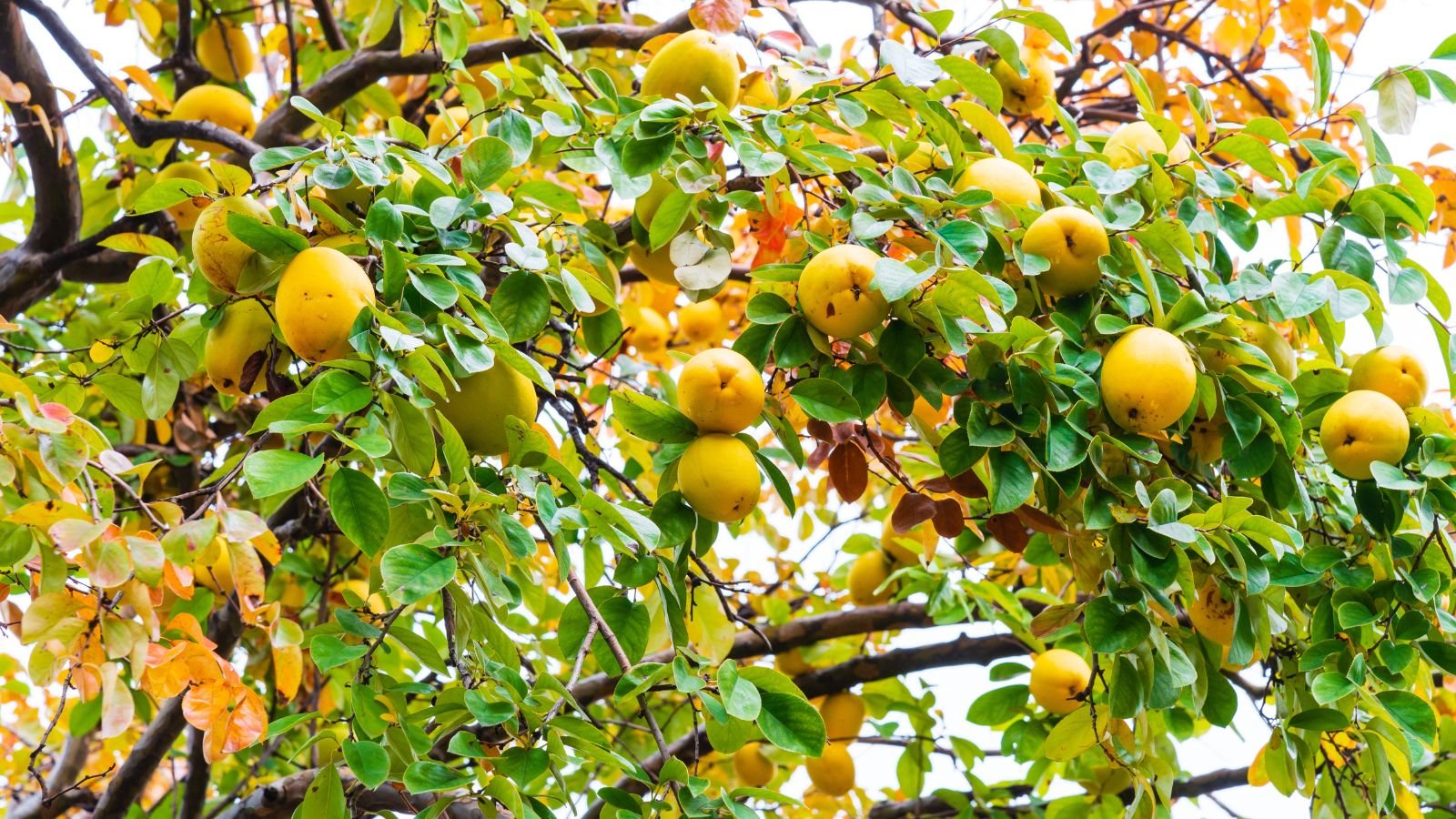

Whereas the title “Cydonia” refers to a quince genus originating in Crete, Greece, there’s an Asian quince relative inside the genus Pseudocydonia, which suggests “false Cydonia.” Pseudocydonia sinensis, or Chinese language language quince, does bear an aromatic and edible yellow pome fruit like its shut kin. Nonetheless, Chinese language language quince is perhaps best recognized within the USA for its ornamental choices. P. sinensis has cheerful, pink flowers that appear in spring, leathery leaves that flip a red-orange color in fall, and bark that peels to reveal a patchwork of colors in inexperienced, brown, orange, and gray tones.
Totally different quince-like species embody Japanese quince (Chaenomeles japonica) and two widespread flowering quince on this genus, C. speciosa and C. lagenaria. These shrubs are often used as spring-flowering ornamentals. Their fruit is taken under consideration inedible, nevertheless it’s usually used as a jelling agent as a result of extreme pectin content material materials.
Pesky Pests and Illnesses
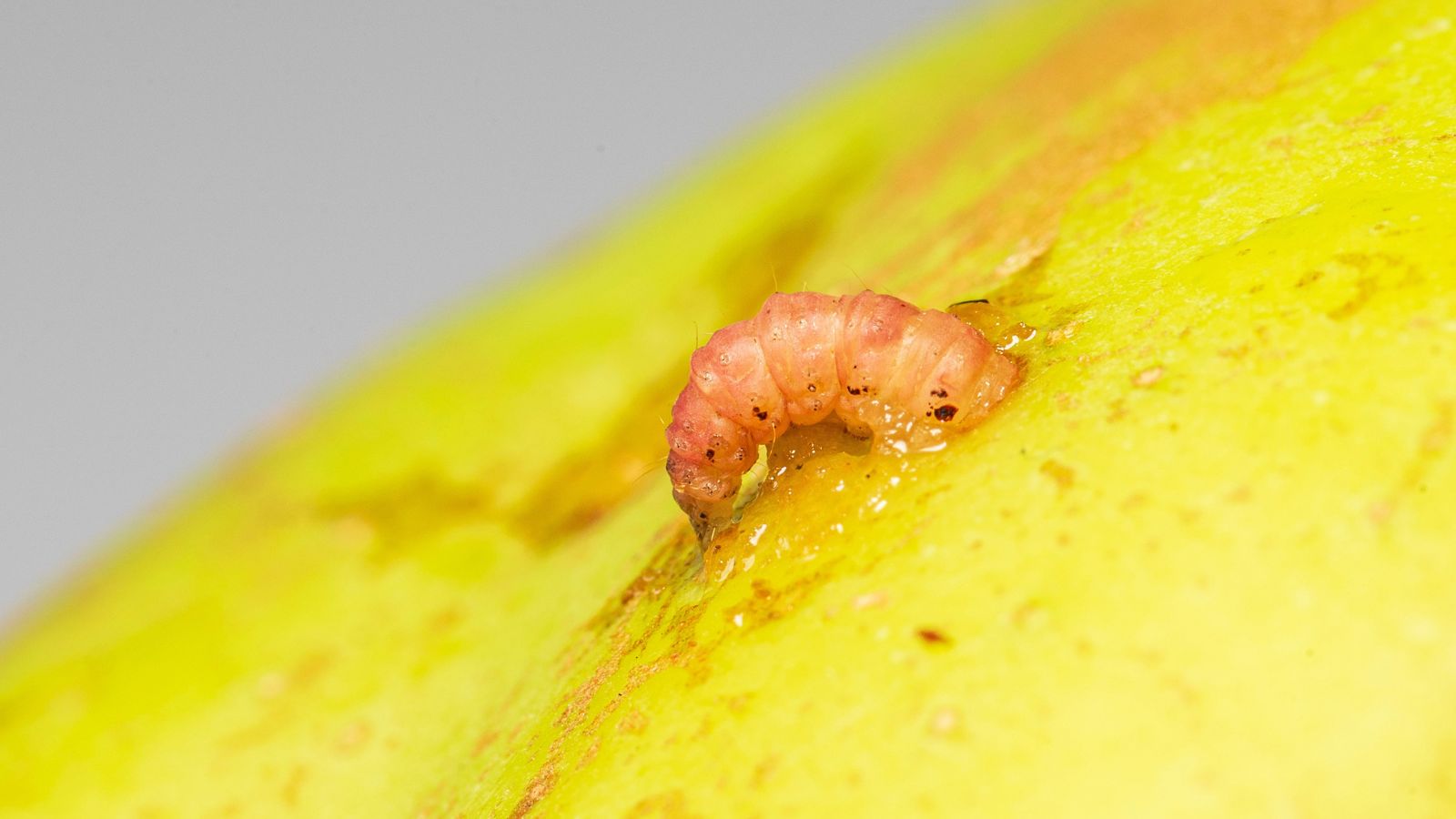

Sadly, quince has a great deal of pure enemies that will adore it to lack of life or on the very least, destroy its fruit. Environments with warmth, humid summers may very well be part of the problem, notably as regards to fire blight, a bacterial an an infection that blackens and shrivels fruit. Rust, brown rot, leaf blight, and powdery mildew — all fungal illnesses — will even be an issue. The proper prevention for these points is to avoid additional nitrogen and to set timber in areas the place they’ll be drier fairly than constantly damp.
Insect pests embody borers, the codling moth, and tent caterpillars. The proper security is to take care of the tree healthful by pruning, mulching, and watering since a weakened tree is additional inclined to assault.
For the codling moth, which burrows into fruit as a newly hatched larva, some growers use a pure enemy to assault it early. Tiny Trichogramma wasps are parasitic to various completely totally different moth eggs and may very well be ordered for launch all through flower-blooming season.
Dwelling gardeners should in its place plant insectary crops near their quince, like coneflower, fennel, lavender, sunflower, and additional. Fruit thinning is one different preventative given that degree the place two pomes contact may very well be an entryway for larvae. Capturing grownup moths sooner than they lay eggs using pheromone traps is one different strategy to stop an infestation.
In your entire yard, one different strategy to protect bugs beneath administration is to attraction to pure predators like birds. Woodpeckers and songbirds paying homage to chickadees and nuthatches help protect insect populations in study. Host these helpers with a chook bathtub, birdhouses, and native berry shrubs to encourage them to feast on youthful pests sooner than harmful bugs become damaging to your tree.
Customary Varieties
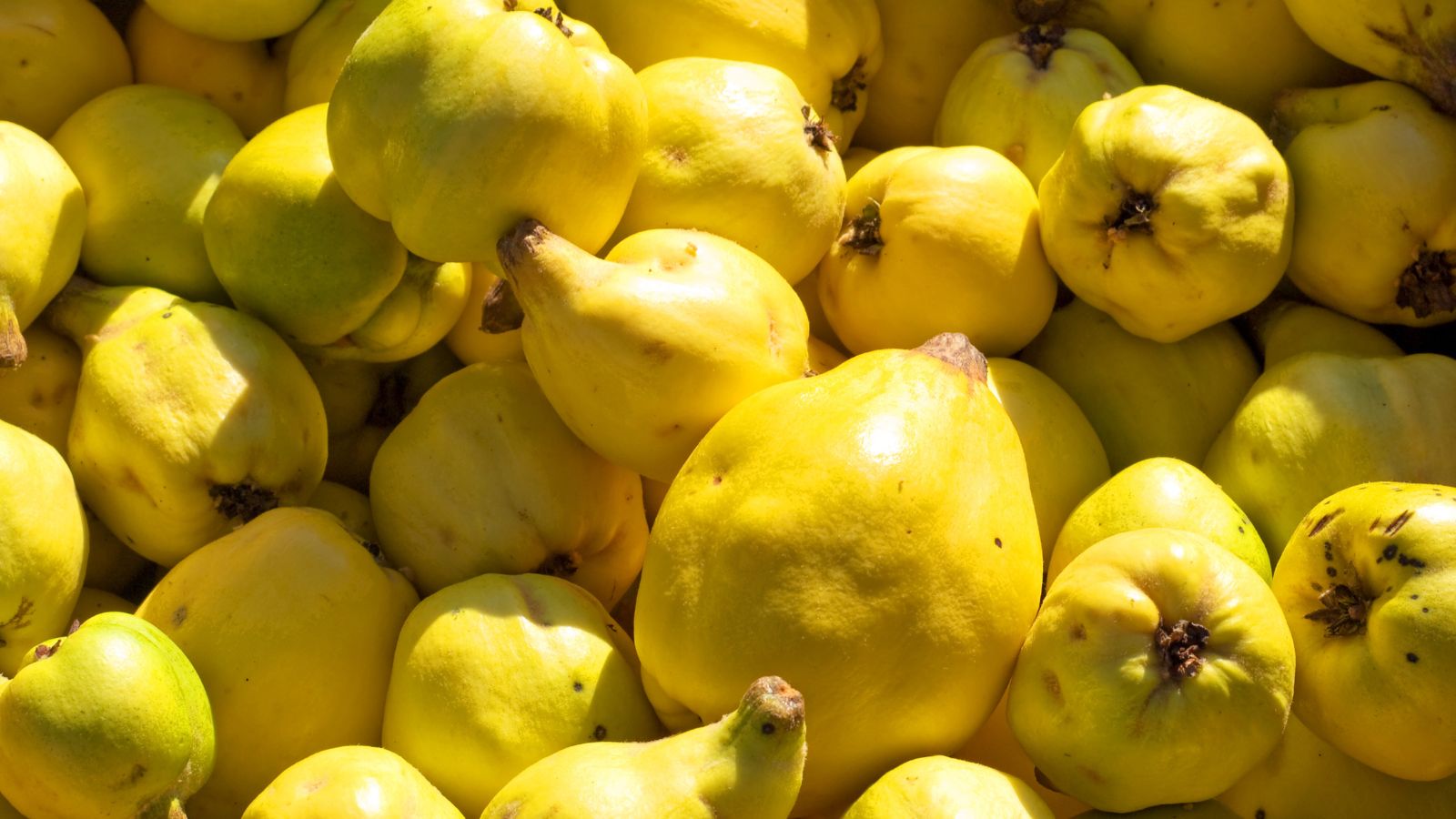

There are dozens of kinds of C. oblonga, nevertheless solely a small group of cultivars might be discovered inside the U.S. by nurseries. Listed below are among the many cultivars you’re most likely to see stocked by fruit tree growers:
- ‘Pineapple’ – as its title suggests, this choice has a barely tropical, pineapple style. Developed in California in 1899, it has been effectively grown inside the San Joaquin Valley for over 100 years.
- ‘Van Deman’ – one different California choice, this quince gained a medal following its introduction inside the late 1800s. A hardy tree with extreme yields, its fruit’s style is described as spicy.
- ‘Havran’ – tasty ample for up to date consuming and durable, this one is simply not similar to the others. Moreover disease-resistant, the heritage, Russian choice was rediscovered by Turkish researchers.
Constantly Requested Questions
This self-fertile tree produces fruit about 2-3 years after planting a 2-year-old sapling.
Quince may very well be grown from seed, nevertheless it can probably be completely totally different from its father or mom. Growers usually take hardwood cuttings and graft them onto a quince rootstock.
Certain! Quince may very well be potted in a well-draining soil mix in a container that’s a minimum of 24” in diameter and depth. Set in full photo voltaic and in a wind-sheltered spot, paying homage to in opposition to a wall. As a result of it grows, it will have to be repotted into an even bigger container to supply its roots a great deal of room.
[ad_2]
Provide hyperlink
